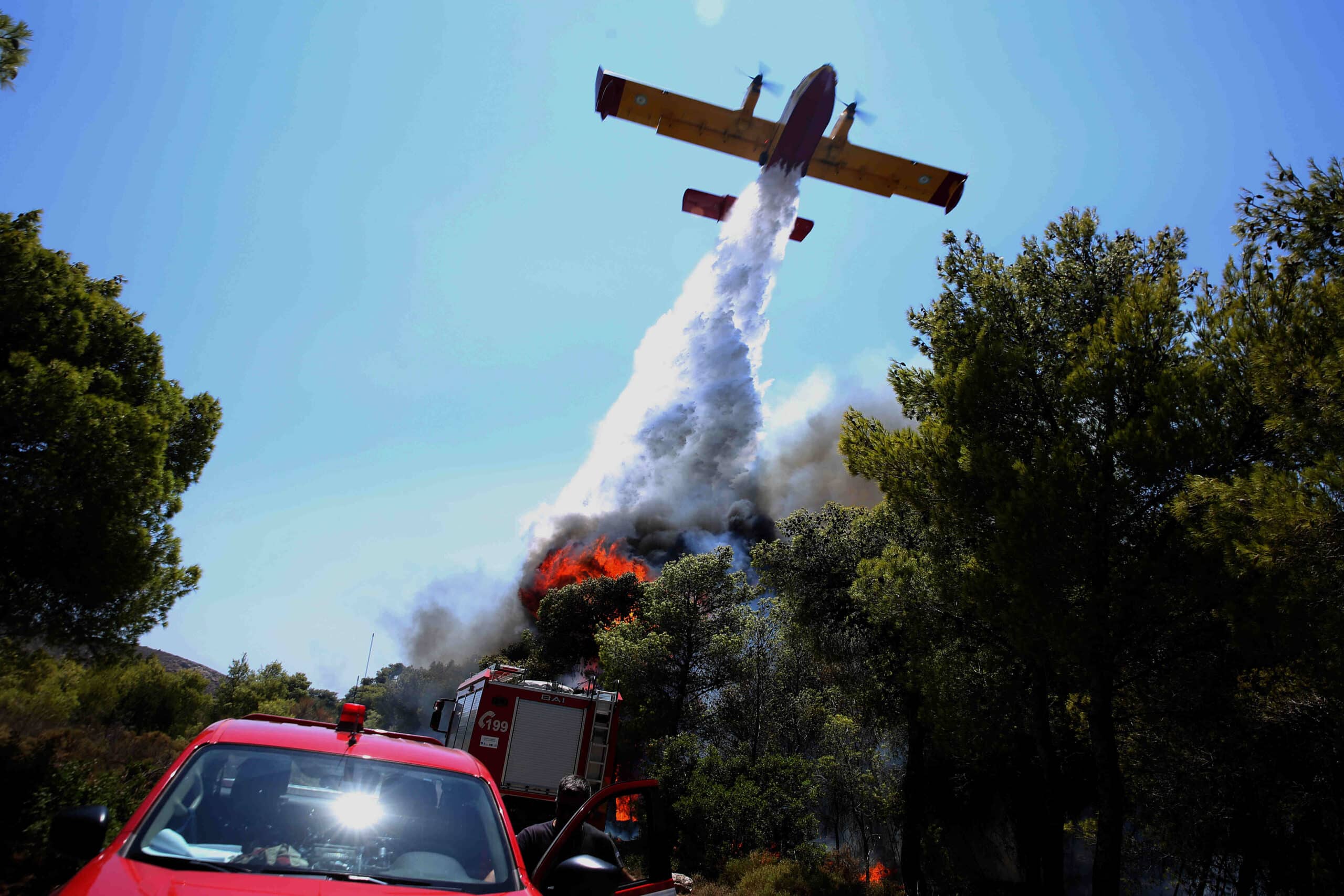
As Greece contends with widespread forest fires across the country, preliminary satellite data shows that nearly 24,700 acres (about 10,000 hectares) have been impacted by six major fire fronts in the past two days.
Early-morning temperature hotspot data from the Visible Infrared Imaging Radiometer Suite (VIIRS) satellites revealed the extent of the affected areas, with estimated damage in each region as follows:
- Chios: ~9,880 acres (4,000 hectares)
- Moiraiika, Achaia: ~4,940 acres (2,000 hectares)
- Filippiada (Preveza region): ~4,450 acres (1,800 hectares)
- Zakynthos: ~4,210 acres (1,700 hectares)
- Paliampela (Preveza): ~618 acres (250 hectares)
- Patras area: ~494 acres (200 hectares)
Authorities emphasize that these figures do not reflect the actual area burned but rather the regions where fire activity was detected. Accurate assessments of burned areas will require detailed analysis of high-resolution satellite imagery to account for possible unburned “islands” within the hotspots.
Intensifying fire crisis across Greece
This satellite-derived estimate comes amid one of the most severe wildfire periods in recent memory. As of August 13, 2025, more than 150 new forest fires had broken out nationwide in just two days, overwhelming response efforts.
In Achaia and near the regional unit’s capital of Patras, fires destroyed homes and industrial buildings, prompting emergency evacuations and road closures—including sections of the Patras–Pyrgos highway and the ring road—to protect residents and infrastructure.
On Zakynthos, flames triggered mass evacuations and dramatic scenes, with smoke visible from as far as Laganas Bay, while on Chios, firefighters and coast guard teams evacuated residents and tourists, coordinating rescues by sea as flames reached coastal areas.
In total, nearly 5,000 firefighters and 33 aircraft have been mobilized, battling blazes under hot, windy conditions that continue to hamper containment efforts. At least seven towns, encompassing around 7,700 residents, have received evacuation orders. Dozens of people—including tourists—have been hospitalized for smoke inhalation, and thirteen firefighters have sustained injuries.
Forest fires in Greece: A two-year overview (2023–2025)
From 2023 to 2025, Greece experienced a series of increasingly severe forest fires that caused widespread destruction across both populated areas and natural ecosystems. Driven by prolonged droughts, extreme heatwaves, and strong seasonal winds, these fires severely affected forested regions, agricultural zones, and local communities.
In 2023, the country witnessed one of its worst wildfire seasons in modern history. The most catastrophic incident occurred in the Evros region of northeastern Greece, where fires burned over 93,000 hectares—equivalent to 930 million square meters—of land, much of it dense forest.
This event became the largest recorded forest fire in EU history, leaving behind scorched woodlands, destroyed habitats, and barren landscapes. In addition to the environmental devastation, at least 20 people lost their lives, and thousands were forced to evacuate their homes and businesses.
What happened in 2024?
In 2024, although the scale of destruction was somewhat reduced, wildfires remained a recurring and serious threat. Major blazes erupted in Attica, Euboea, Rhodes, and the Peloponnese, consuming large tracts of forested hillsides and protected nature reserves.
Damage to woodland areas was extensive, with satellite imagery showing thousands of square meters of charred terrain. Improvements in early warning systems and emergency response helped limit casualties, but the environmental toll remained high, particularly for Greece’s fragile forest ecosystems.
According to the European Forest Fire Information System (EFFIS), as of August 13 2024, approximately 10,630 hectares (about 26,270 acres) of land had been burned in the East Attica region. By August 14, forest fires had scorched 40 square miles (roughly 41,930 hectares) northeast of Athens, ultimately affecting a total of 100,000 acres (around 40,470 hectares).
As of mid-2025, early signs indicate a continuation of the trend, with high-risk areas already reporting smaller forest fires ahead of the peak season. In response, the Greek government has increased funding for fire prevention, reforestation efforts, and aerial firefighting capacity.
Still, experts warn that recurring wildfires are not only a seasonal threat but also a long-term ecological crisis, as scorched forest lands take decades to regenerate—if they ever recover at all.

